Key Takeaways
- Hormone optimization therapy aims to restore hormonal balance in both men and women
- Common symptoms of hormone imbalance include fatigue, weight gain, and mood swings
- Treatment options include bioidentical hormone replacement therapy and lifestyle changes
- Hormone optimization can improve energy levels, cognitive function, and overall well-being
- Personalized treatment plans are essential for effective hormone optimization
- Regular monitoring and adjustments are necessary for optimal results
Hormone optimization therapy is a medical approach that seeks to restore hormonal balance in the body, addressing deficiencies or imbalances that can occur with age or due to various health conditions. This treatment has gained popularity in recent years as more people recognize the impact hormones have on overall health and well-being. By carefully adjusting hormone levels, patients can experience improvements in energy, mood, cognitive function, and physical health.
Understanding Hormone Imbalances
Hormones are chemical messengers that play a crucial role in regulating various bodily functions. As we age, hormone production can naturally decline, leading to imbalances that affect our health and quality of life. These imbalances can occur in both men and women, albeit with some differences in the specific hormones involved.
Common Hormones Affected
Several key hormones are often the focus of hormone optimization therapy:
- Testosterone
- Estrogen
- Progesterone
- Thyroid hormones
- Cortisol
- Growth hormone
Each of these hormones has unique functions in the body, and imbalances can lead to a range of symptoms and health issues.
Symptoms of Hormone Imbalance
Recognizing the signs of hormone imbalance is the first step towards seeking treatment. Some common symptoms include:
- Fatigue and low energy
- Weight gain, especially around the midsection
- Mood swings and irritability
- Decreased libido
- Difficulty sleeping
- Brain fog and memory issues
- Muscle loss and weakness
- Hot flashes and night sweats (in women)
It’s important to note that these symptoms can also be caused by other health conditions, so a proper medical evaluation is necessary for an accurate diagnosis.
The Science Behind Hormone Optimization
Hormone optimization therapy is based on the principle that restoring hormones to their optimal levels can alleviate symptoms and improve overall health. This approach takes into account the complex interplay between different hormones and aims to create a balanced hormonal environment in the body.
Hormone Testing
The first step in hormone optimization is comprehensive hormone testing. This typically involves blood tests to measure levels of various hormones, including:
- Total and free testosterone
- Estradiol
- Progesterone
- Thyroid-stimulating hormone (TSH)
- Free T3 and T4
- Cortisol
- Insulin-like growth factor 1 (IGF-1)
These tests provide a baseline assessment of a patient’s hormonal status and help guide treatment decisions.
Personalized Treatment Plans
One of the key principles of hormone optimization therapy is that treatment should be tailored to each individual’s unique needs. Factors such as age, gender, medical history, and lifestyle are all taken into account when developing a treatment plan.
Treatment Options for Hormone Optimization
There are several approaches to hormone optimization, and the best option depends on the individual’s specific needs and preferences.
Bioidentical Hormone Replacement Therapy (BHRT)
BHRT involves using hormones that are chemically identical to those produced by the human body. These hormones are typically derived from plant sources and can be customized to match each patient’s needs.
| Hormone | Common Symptoms Addressed | Potential Benefits |
|---|---|---|
| Testosterone | Low libido, fatigue, muscle loss | Increased energy, improved muscle mass, enhanced mood |
| Estrogen | Hot flashes, vaginal dryness, mood swings | Reduced menopausal symptoms, improved bone density |
| Progesterone | Sleep disturbances, anxiety | Better sleep quality, mood stabilization |
| Thyroid hormones | Weight gain, fatigue, cold intolerance | Improved metabolism, increased energy |
Hormone Pellet Therapy
This method involves inserting small pellets containing bioidentical hormones under the skin. The pellets slowly release hormones over several months, providing a consistent dose and reducing the need for daily medications.
Lifestyle Modifications
In addition to hormone replacement, lifestyle changes can play a significant role in hormone optimization:
- Regular exercise
- Balanced nutrition
- Stress management techniques
- Adequate sleep
- Limiting alcohol and caffeine intake
These changes can help support healthy hormone production and enhance the effects of hormone therapy.
The Hormone Optimization Process
Hormone optimization is not a one-time treatment but an ongoing process that requires regular monitoring and adjustments.
Initial Consultation and Testing
The process typically begins with a comprehensive consultation and hormone testing to assess the patient’s current hormonal status and health concerns.
Treatment Initiation
Based on the test results and the patient’s symptoms, a personalized treatment plan is developed. This may include hormone replacement therapy, lifestyle recommendations, and supplements.
Monitoring and Adjustments
Regular follow-up appointments and hormone tests are essential to monitor progress and make necessary adjustments to the treatment plan. This ensures that hormone levels remain optimized over time.
Benefits of Hormone Optimization
Patients who undergo hormone optimization therapy often report a range of benefits:
- Increased energy and vitality
- Improved mood and mental clarity
- Enhanced libido and sexual function
- Better sleep quality
- Increased muscle mass and strength
- Reduced body fat
- Improved bone density
- Enhanced skin tone and texture
These benefits can lead to a significant improvement in overall quality of life and well-being.
Potential Risks and Side Effects
While hormone optimization therapy can offer numerous benefits, it’s important to be aware of potential risks and side effects. These can include:
- Acne or oily skin
- Fluid retention
- Increased risk of blood clots (in some cases)
- Changes in hair growth patterns
It’s crucial to work with a qualified healthcare provider who can monitor for these effects and adjust treatment as needed.
Choosing a Hormone Optimization Provider
Selecting the right provider for hormone optimization therapy is essential for achieving optimal results and ensuring safety.
Qualifications to Look For
When choosing a provider, consider the following:
- Board certification in endocrinology, urology, or anti-aging medicine
- Extensive experience in hormone therapy
- A personalized approach to treatment
- Use of comprehensive hormone testing
- Commitment to ongoing monitoring and follow-up care
Questions to Ask Potential Providers
- What is your experience with hormone optimization therapy?
- How do you determine the appropriate hormone doses?
- What type of hormone testing do you use?
- How often will my hormone levels be monitored?
- What potential side effects should I be aware of?
The Future of Hormone Optimization
As research in the field of endocrinology and anti-aging medicine continues to advance, hormone optimization therapy is likely to become even more precise and effective.
Emerging Technologies
New technologies are being developed to improve hormone delivery methods and monitoring:
| Technology | Description | Potential Benefits |
|---|---|---|
| Wearable hormone monitors | Devices that can continuously track hormone levels | Real-time hormone monitoring for more precise treatment |
| Nanotechnology-based delivery systems | Advanced methods for delivering hormones more efficiently | Improved absorption and fewer side effects |
| Genetic testing for hormone sensitivity | Analyzing genetic markers to predict hormone therapy response | More personalized treatment plans |
Ongoing Research
Researchers are continually studying the long-term effects of hormone optimization therapy and exploring new applications for this treatment approach. This ongoing research will help refine treatment protocols and improve patient outcomes.
Conclusion
Hormone optimization therapy offers a promising approach for addressing the symptoms of hormone imbalance and improving overall health and well-being. By restoring hormones to their optimal levels, patients can experience increased energy, improved mood, and enhanced physical health.
However, it’s important to approach hormone optimization as a personalized, ongoing process that requires careful monitoring and adjustments. With the right provider and a commitment to a healthy lifestyle, hormone optimization can be a powerful tool for maintaining vitality and quality of life as we age.

